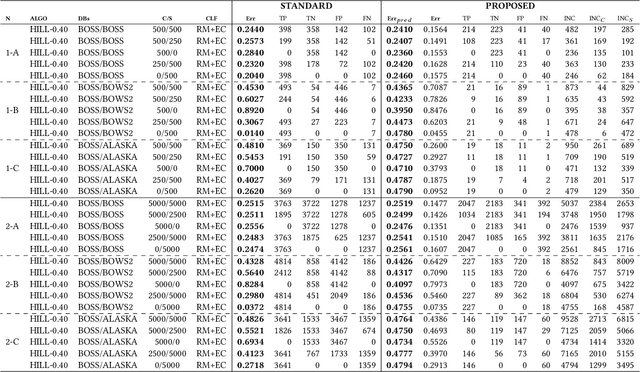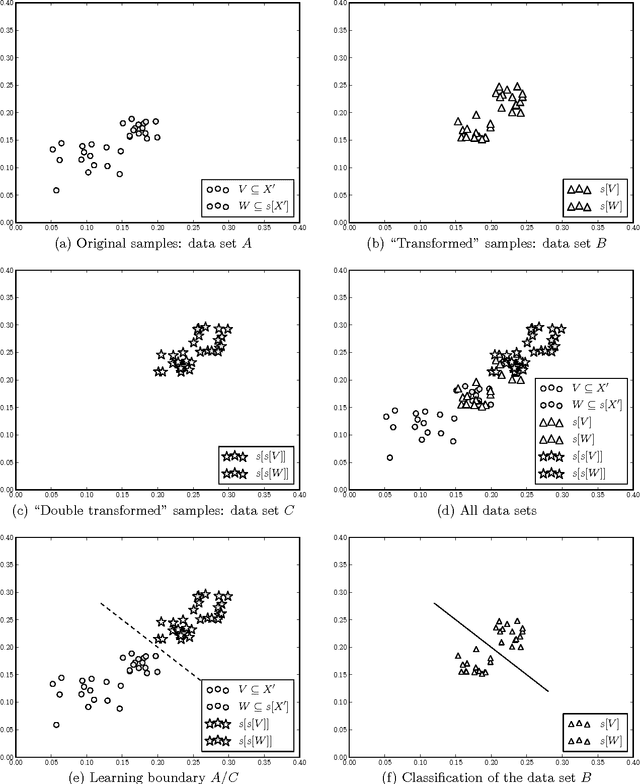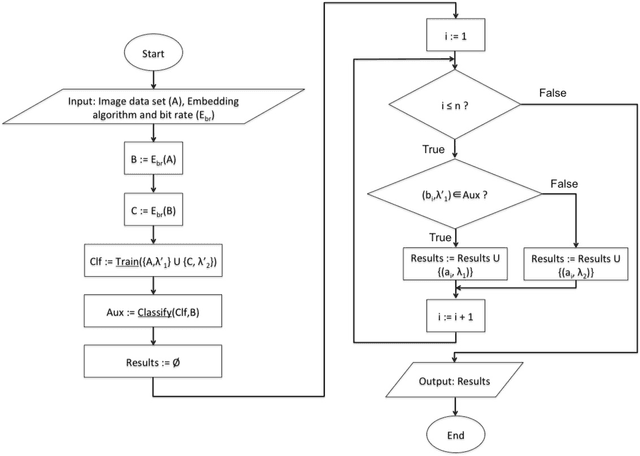Daniel Lerch-Hostalot
Detection of Classifier Inconsistencies in Image Steganalysis
Sep 23, 2019



Abstract:In this paper, a methodology to detect inconsistencies in classification-based image steganalysis is presented. The proposed approach uses two classifiers: the usual one, trained with a set formed by cover and stego images, and a second classifier trained with the set obtained after embedding additional random messages into the original training set. When the decisions of these two classifiers are not consistent, we know that the prediction is not reliable. The number of inconsistencies in the predictions of a testing set may indicate that the classifier is not performing correctly in the testing scenario. This occurs, for example, in case of cover source mismatch, or when we are trying to detect a steganographic method that the classifier is no capable of modelling accurately. We also show how the number of inconsistencies can be used to predict the reliability of the classifier (classification errors).
Unsupervised Steganalysis Based on Artificial Training Sets
Mar 02, 2017



Abstract:In this paper, an unsupervised steganalysis method that combines artificial training setsand supervised classification is proposed. We provide a formal framework for unsupervisedclassification of stego and cover images in the typical situation of targeted steganalysis (i.e.,for a known algorithm and approximate embedding bit rate). We also present a completeset of experiments using 1) eight different image databases, 2) image features based on RichModels, and 3) three different embedding algorithms: Least Significant Bit (LSB) matching,Highly undetectable steganography (HUGO) and Wavelet Obtained Weights (WOW). Weshow that the experimental results outperform previous methods based on Rich Models inthe majority of the tested cases. At the same time, the proposed approach bypasses theproblem of Cover Source Mismatch -when the embedding algorithm and bit rate are known-, since it removes the need of a training database when we have a large enough testing set.Furthermore, we provide a generic proof of the proposed framework in the machine learningcontext. Hence, the results of this paper could be extended to other classification problemssimilar to steganalysis.
 Add to Chrome
Add to Chrome Add to Firefox
Add to Firefox Add to Edge
Add to Edge